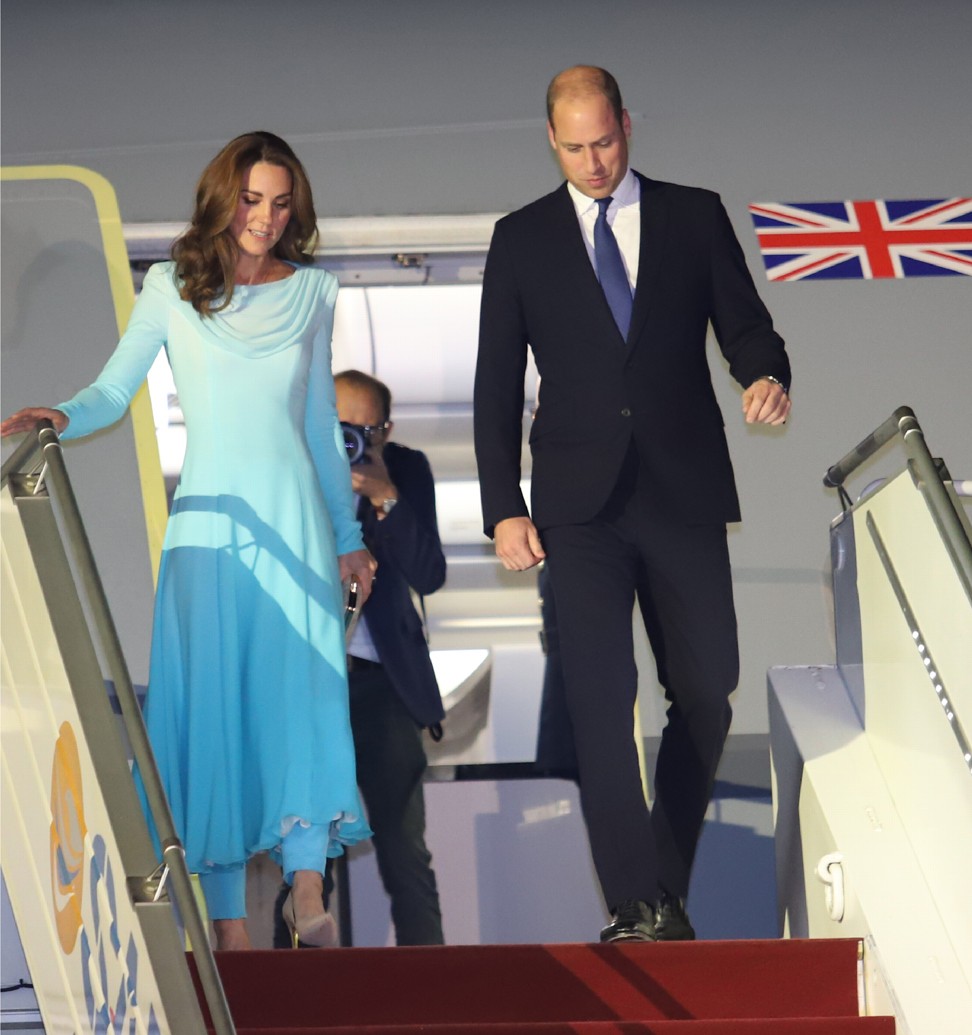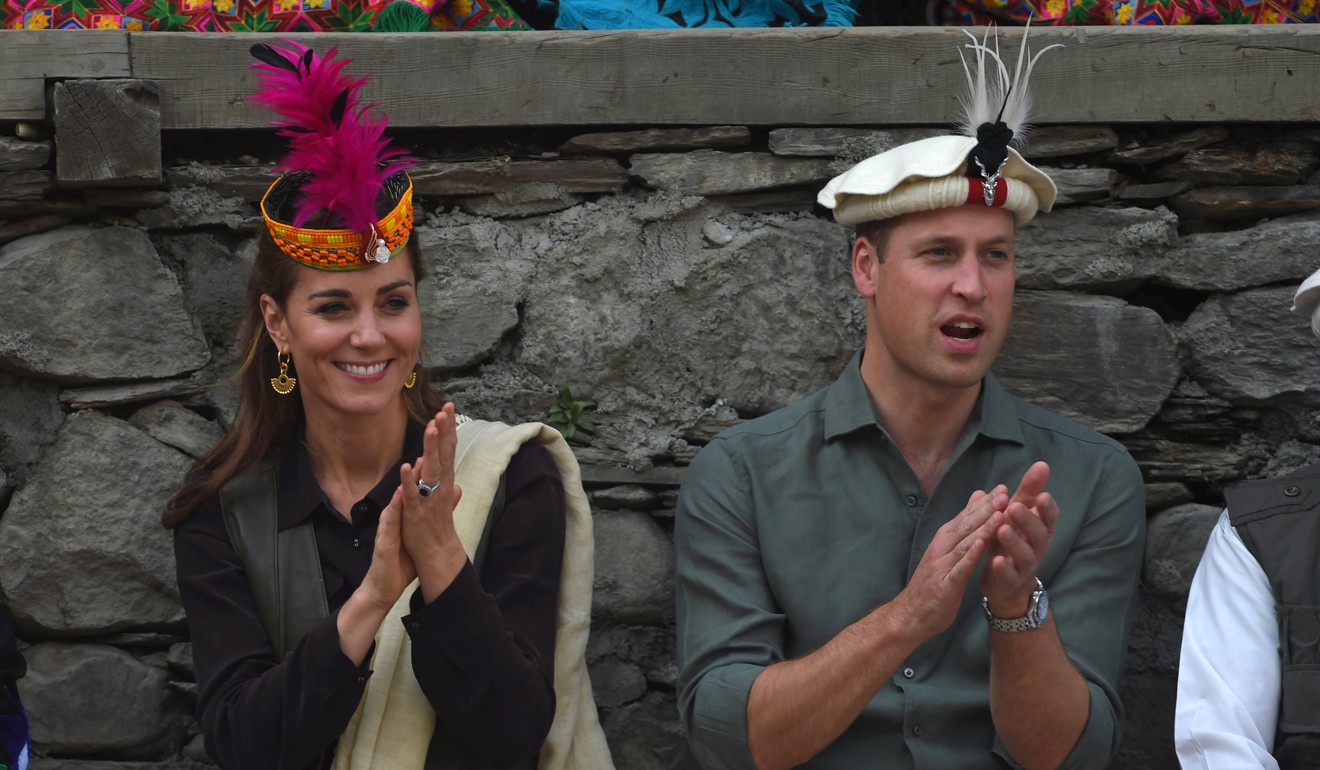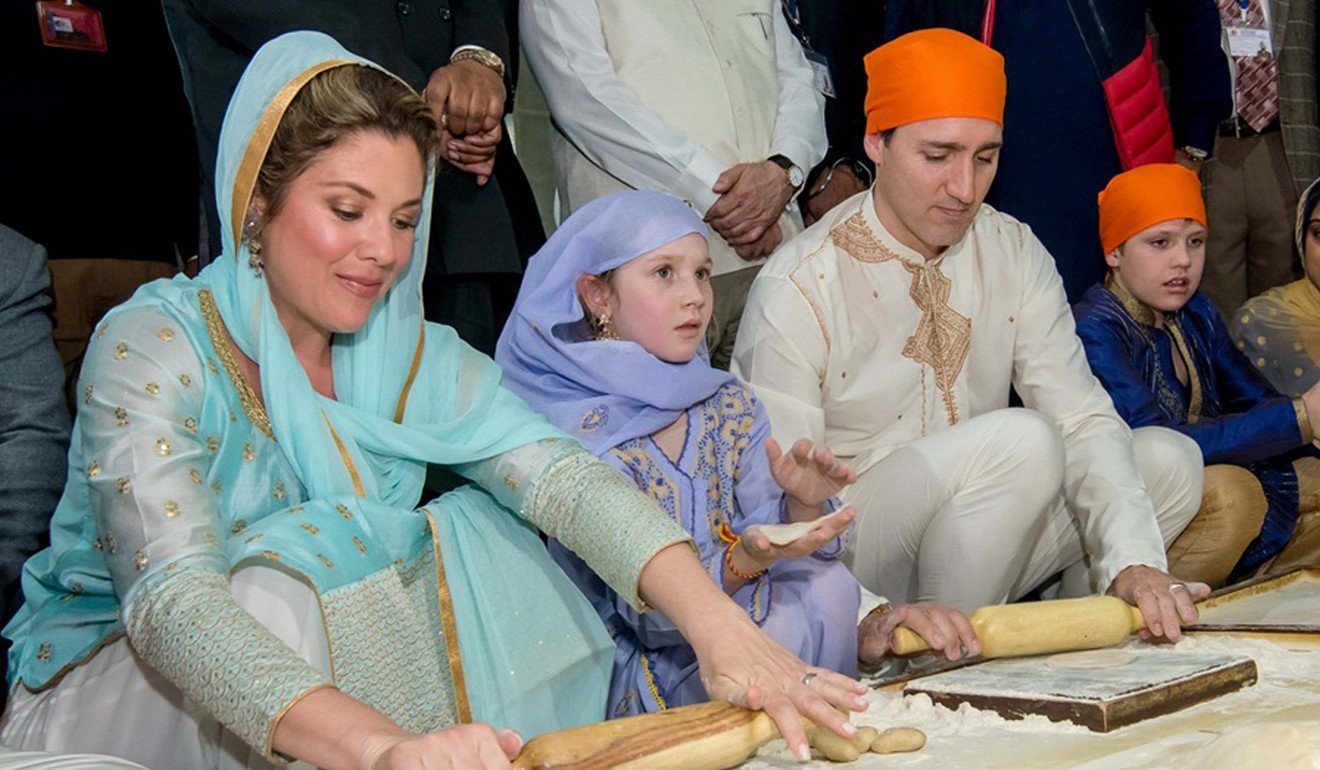
Why are Prince William and Kate Middleton praised for Pakistani outfits, when Trudeau’s turban was mocked in India?
- It’s a fine line between cultural appreciation and appropriation
- Kate Middleton stayed the right side of respectful with her shalwar kameez in Pakistan, but Justin Trudeau’s turban in India looked ‘out of place’
And it had little to do with the fact the pair were embarking on the first royal tour of the former British colony since 2006.
Rather it was for what she was wearing: an ombre aqua shalwar kameez – a tunic worn with trousers that is Pakistan’s national dress.

“Welcome to Pakistan,” tweeted Zehreeli Chummii. “Thank you [for] wearing our traditional dress.”
“Kate Middleton looks so gorgeous in this subcontinental outfit,” posted @ExMuslimBlogger.
Since then, Pakistani social media has been full of praise for the visiting royals, whose tasteful acts of sartorial tribute to their host nation have won them a legion of new fans who credit them with getting “cultural appreciation” spot on.

When Trudeau – who was recently found to have posed for “blackface” and “brownface” photos in the past – spent eight days travelling across India with his family of five, he was accused of a series of cultural gaffes that cost his image dearly.
Among his mistakes were a glittering gold sherwani he wore to a meeting with Bollywood stars and a bright orange turban he wore to a local temple.
“FYI we Indians don’t dress like this every day sir, not even in Bollywood,” Indian politician Omar Abdullah had tweeted at the time, while a chorus of local media branded the visit “disastrous” and the “trip to end all trips”.

The difference in reactions to both incidents shows that the line between cultural appreciation and appropriation is a fine one, says Vivek Dehejia, a professor of economics and philosophy at Carleton University in Canada.
“If the intentions are sincere and respectful, this stays on the line,” he said.
But Trudeau’s Indian dress came off more like a publicity stunt than a genuine tribute to the country, Dehejia said.
“It was crass cultural appropriation playing to the South Asian diaspora audience back home in Canada. It would be like a foreign leader visiting Canada showing up in a kilt at a black tie event,” he said.
Rather than criticising the British royal couple, most press attention in South Asia has focused on comparisons between Kate and the late Princess Diana, who was praised for similar acts of sartorial homage when she visited Pakistan in 1996.
Among Kate’s most noted outfits have been a bright cornflower blue shalwar kameez she wore to Islamabad Model College for Girls and the bright parakeet green kurta, or loose collarless shirt, that she wore to meet Pakistani Prime Minister Imran Khan.
Some media observed the shade of green was similar to that of Pakistan’s National Flag. Even William has got in the act, wearing a peacock green sherwani, or long coat along with matching pants, in what the British press breathtakingly recorded as a “royal first”.

So what’s the difference between Trudeau’s insensitive appropriation and the British royals’ tasteful appreciation? Saad Salman, the Pakistani-Canadian founder and editor of The Royal Watcher blog, said the devil is in the details.
“The Trudeau family’s dress was more suitable for the bride and groom at a lavish Indian wedding than for visits to temples or state receptions,” Salman said.
In contrast, the Duke and Duchess of Cambridge’s traditional outfits were classic and quietly understated – much more suited to the events on their schedule. “The Trudeau family simply looked out of place,” he said.

Monica Verma, a PhD candidate in international relations at South Asian University in New Delhi, said Trudeau’s dress did not reflect how real Indians dressed.
“They were dramatic, high on symbolism and looked like the Bollywood version of Indian culture,” she said.
British royal couple William and Kate arrive in Pakistan for ‘complex’ visit
However, Verma said not everyone in India had been offended by Trudeau’s poor dress choices, noting that the very concept of cultural appropriation was Western.
“In South Asian societies, imitation is taken positively,” Verma said. “Copying the dressing style, customs or picking up local vocabulary is seen by the natives as an act of respect by foreigners.”
Still, as Trudeau’s experience suggests, Western dignitaries and world leaders should be cautious when presenting themselves in South Asia, she said.

“We are a diverse region of eight countries,” said Verma. “What is acceptable in India won’t be acceptable in other parts of South Asia … Pakistan as a society is very conservative, and elites have to be cautious of the Islamic sensitivities as well.”
Carleton University’s Dehejia said because of modern colonial history, public figures and leaders from Western nations had to be extra careful in this regard.
“They have a heightened responsibility to be culturally sensitive given the history of colonisation and cultural genocide perpetrated by generations of European colonisers.”

